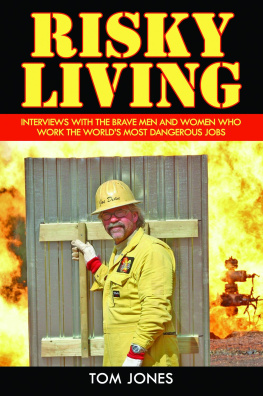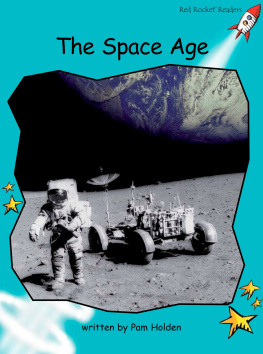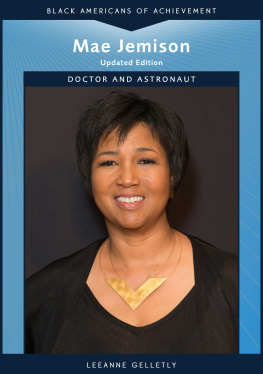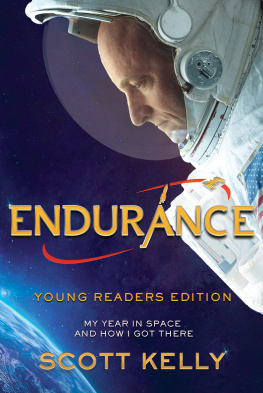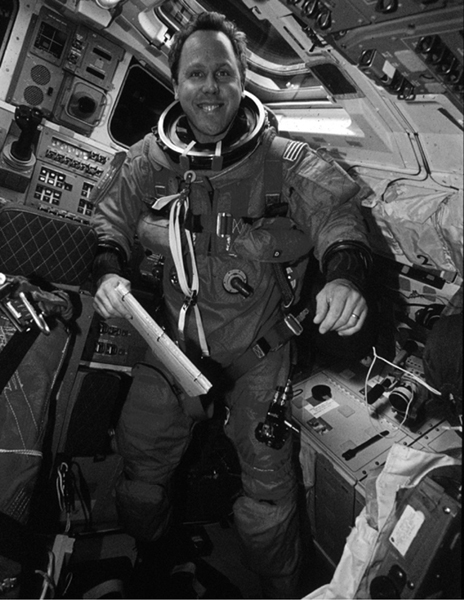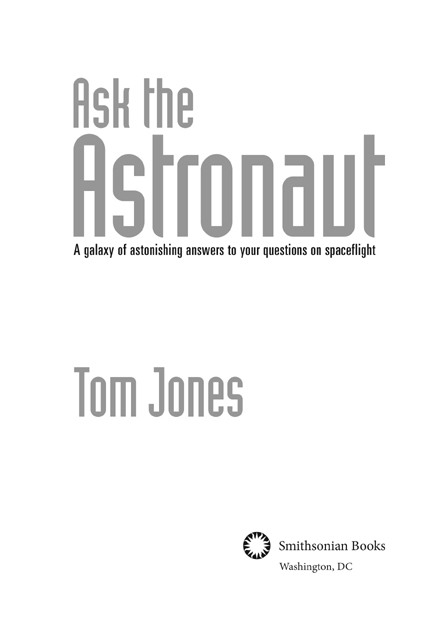2016 by Tom Jones
All rights reserved. No part of this publication may be reproduced or transmitted in any form or by any means, electronic or mechanical, including photocopying, recording, or information storage or retrieval system, without permission in writing from the publishers.
This book may be purchased for educational, business, or sales promotional use. For information, please write: Special Markets Department, Smithsonian Books, P. O. Box 37012, MRC 513, Washington, DC 20013
Published by Smithsonian Books
Director: Carolyn Gleason
Production Editor: Christina Wiginton
Editorial Assistant: Jaime Schwender
Edited by Jean Crawford
Designed by Service Station
Library of Congress Cataloging-in-Publication Data
Names: Jones, Tom, 1955 January 22- author.
Title: Ask the astronaut : a galaxy of astonishing answers to your questions
on spaceflight / Tom Jones.
Description: Washington DC : Smithsonian
Books, [2016] | Includes
bibliographical references.
Identifiers: LCCN 2015037850 | ISBN 9781588345370
Subjects: LCSH: Space flightJuvenile literature. Space flightPhysiological effectJuvenile literature. AstronauticsJuvenile literature. AstronautsJuvenile literature. Childrens questions and answers. Outer spaceExplorationJuvenile literature.
eBook ISBN: 978-1-58834-538-7
Classification: LCC TL793 .J65 2016
DDC 629.4/1dc23 LC record available at http://lccn.loc.gov/2015037850
For permission to reproduce illustrations appearing in this book, please correspond directly with the owners of the works, as seen at the end of the photo captions. Smithsonian Books does not retain reproduction rights for these images individually, or maintain a file of addresses for sources.
www.SmithsonianBooks.com
v3.1
It is difficult to say what is impossible, for the dream of yesterday is the hope of today and the reality of tomorrow.
Robert H. Goddard
This book is dedicated to the next generation of space explorers, undaunted by the impossible.
Contents
Introduction
Space exploration has been at the core of my personal interests and professional life for more than five decades. When I was five, my grandmother gave me a slim book about spaceflight that seized my imagination and set me on a course toward the stars. As a student, I watched humankinds first steps on the Moon and made up my mind to be part of our push into the cosmos.
I was piloting Air Force B-52s when NASA unveiled its new space shuttle. A few years later I got my first glimpse of an orbiterthe Columbiaat its refueling stop in Tucson, Arizona. I worked hard to earn an opportunity to fly her, and ten years later I launched aboard that very ship on my third shuttle mission. Ive been very luckyand privilegedto represent the United States in space on four space shuttle missions, including a journey to the International Space Station.
Perhaps the most special moment of those adventures came near the end of my third spacewalk at the space station. I was ahead of schedule for my planned work outside, and was aware that I would soon have to return to the cabin of shuttle Atlantis. Taking a brief break from my work, I gripped a handrail at the very prow of the station and looked out at my surroundings.
The view through the plastic faceplate of my helmet was breathtakingly beautiful. I was perched on the bow of a giant, space-age vessel that was falling effortlessly around the globe. Above me, the stations golden solar array wings, against a velvet-black sky, stretched across the heavens like the canvas of a windjammer under full sail. A thousand miles ahead, the Earths curved horizon ended in the thin, gauzy blue of the atmosphere. Two hundred and twenty miles beneath my boots, the brilliant blue waters of the Pacific, swept with dazzling white clouds, rolled serenely by. Struck by this vista, I felt tears of gratitude and humility welling in my eyeswhat a gift to see this cosmic stage set by God, and how insignificant it made me feel!
Contemplating that scene was just one of many, many inspirational moments I experienced in space. Since my final mission ended, Ive been trying to explain what living in space is truly like. Over the years Ive spoken to hundreds of audiences and tens of thousands of people, from kindergarteners to corporate executives, from Air Force Academy classmates to church groups, and from international travelers to professional conferees. Every group has peppered me with questions, from the basic to the unusual. In this book Ive answered more than 400 of my favorites to introduce you to the human experience in space.
My space story is interesting, but our future in space belongs to a new generation of twenty-first-century explorers. Thus, many of my answers are addressed to those preparing to explore, along with their parents, families, and teachers. Our drive into the solar system in the decades ahead will follow varied paths to new worlds, many glimpsed only by robot scouts. Where we go, when we go, and what innovations and discoveries well make in settling humanity in space are choices for these new pioneers. They will solve mysteries that have puzzled us for centuries, while askingand answeringquestions we have yet to imagine.
An astronaut samples the surface of a near-Earth asteroid during a future deep-space mission. (NASA)
1. Did you always want to be an astronaut, and when did you decide?
From the first moment I learned about space exploration, I wanted to be part of it. As a ten-year-old Cub Scout, I visited the Martin Marietta rocket factory near my hometown of Baltimore, Maryland. The powerful Gemini-Titan II rockets being built there would take astronauts into space to rehearse the skills needed for the first Moon landing.
Here was the Space Race taking shape right in my home town! I remember looking up at those 10-story-tall, silver and black rockets and thinking that astronauts had the greatest job around. They were flying the most complex machines ever launched and going to places no humans had ever been. From then on, I began reading every scrap of information I could find about space exploration. I was determined to become an astronaut someday.
2. What encouraged you to become an astronaut?
When I was five, my grandmother gave me a copy of Space Flight: The Coming Exploration of the Universe. That book launched my curiosity about astronomy and rocketry. But what really got me hooked was the race to the Moon between the U.S. and the Soviet Union in the 1960s. As a ten-year-old already interested in airplanes and flight, I avidly followed each launch.
My teachers brought televisions into our classrooms so we could watch each Gemini and Apollo blastoff and splashdown. Our regular lessons were put on hold as we watched hours of space news. Television news anchors broadcasting the key moments of each mission were as excited as I was.
I recall the first American spacewalk, the first orbital docking between two spacecraft, and the first Apollo flight to circle the Moon. As the United States gained more and more experience in space, I saw how important the nations progress in space was to my teachers, my parents, and my friends parents, many of whom worked at the nearby Titan rocket factory.



